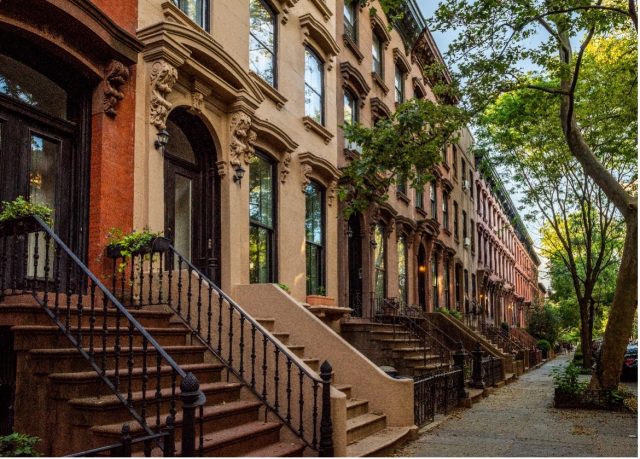As a metropolis that has been constantly reinventing itself for generations, New York City stands at the forefront of urban development and architectural innovation. William Timlen, CPA, notes how this vibrant city’s skyline is a testament to its dynamic nature, with new buildings and developments constantly reshaping the urban landscape. In this article, William Timlen, CPA, delves into how these developments are impacting the neighborhoods of NYC, altering their economic, social, and cultural fabric.
The story of urban development in NYC is one of constant change, driven by the city’s evolving needs and aspirations. From the early days of skyscraper construction to the post-war building boom and the recent focus on high-density, mixed-use developments, these transformations have continually reshaped the city’s neighborhoods. William Timlen, CPA, believes that developing an understanding of this historical context is crucial to comprehending the current state of urban development and its impact on the city’s various communities.
Today, New York City is a tapestry of construction projects, ranging from towering skyscrapers to sprawling residential complexes. These projects, while varied, collectively reflect a city that is perpetually in the midst of significant transformation. Areas like Hudson Yards and Long Island City are examples of neighborhoods experiencing profound changes driven by large-scale development projects that bring a mix of residential, commercial, and recreational spaces.
William Timlen, CPA, explains that new developments in NYC have a ripple effect on local economies, often stimulating growth and opportunity. They create jobs, both during construction and through the businesses that occupy these new spaces. Property values in these neighborhoods typically rise, reflecting the increased desirability of living in a revitalized area. However, this economic upswing can have a downside, particularly regarding housing affordability, posing challenges for long-term residents.
The social landscape of a neighborhood is often the most visibly affected by new developments. These projects can lead to demographic shifts, with new residents bringing different cultural and socioeconomic backgrounds. While this can enrich a community, it can also create tension, particularly when original residents feel displaced or marginalized. The issue of gentrification is a complex one, with both positive and negative aspects that need careful consideration and balance.
William Timlen, CPA, notes that urban development isn’t just about new buildings; it’s also about the infrastructure and amenities that support them. New projects in NYC often include improvements to transportation networks, utility systems, and public spaces. The integration of parks, green spaces, and community facilities is crucial for enhancing the quality of life in these rapidly evolving neighborhoods.
In an era of heightened environmental awareness, new developments in NYC are increasingly focusing on sustainability. This includes the adoption of green building practices, energy-efficient designs, and initiatives to reduce the carbon footprint of these large urban projects. Notable developments have set standards in eco-friendly construction, demonstrating that urban growth can be achieved responsibly.
To illustrate these points, consider the transformation of neighborhoods like Williamsburg in Brooklyn or the Meatpacking District in Manhattan. Once industrial areas, these neighborhoods have since undergone significant changes, becoming vibrant hubs of cultural and social activity. These case studies demonstrate the multifaceted impact of development, encompassing economic growth, demographic shifts, and cultural reinvention.
City planning and policy play a pivotal role in shaping the impact of new developments. Zoning laws, development incentives, and community engagement efforts are crucial tools in ensuring that new projects will contribute positively to their neighborhoods. The interplay between developers, city planners, and residents is vital in creating a harmonious urban environment.
As we look ahead to the future of development in New York City, it’s important to consider the ongoing challenges and emerging trends that will shape the city’s growth and evolution. One of the key issues that will continue to influence development is affordability, with many residents struggling to find housing that is within their budget. This means that any new developments must consider how to create housing that is both affordable and accessible to a wide range of people.
Another factor that will shape development in the city is sustainability. With a growing awareness of the impact that human activity has on the environment, it’s important that new developments are designed with sustainability in mind. This means considering factors such as energy efficiency, waste reduction, and the use of renewable resources.
William Timlen, CPA, notes that community preservation is another crucial issue that must be taken into account when planning new developments. New York City is a diverse and vibrant place, with many different communities and neighborhoods that have their own unique character. It’s important that any new developments take this into account and are designed in a way that respects and preserves the character of the surrounding area.
The impact of new developments on NYC’s neighborhoods is a story of growth, challenge, and adaptation. As the city continues to evolve, so too will the dynamics of its many communities. Through exploring the various dimensions of this impact, William Timlen, CPA, emphasizes the importance of thoughtful and inclusive urban development in shaping the future of New York City.
Home Business Spotlight William Timlen, CPA, on the Impact of New Developments on NYC’s Neighborhood...








